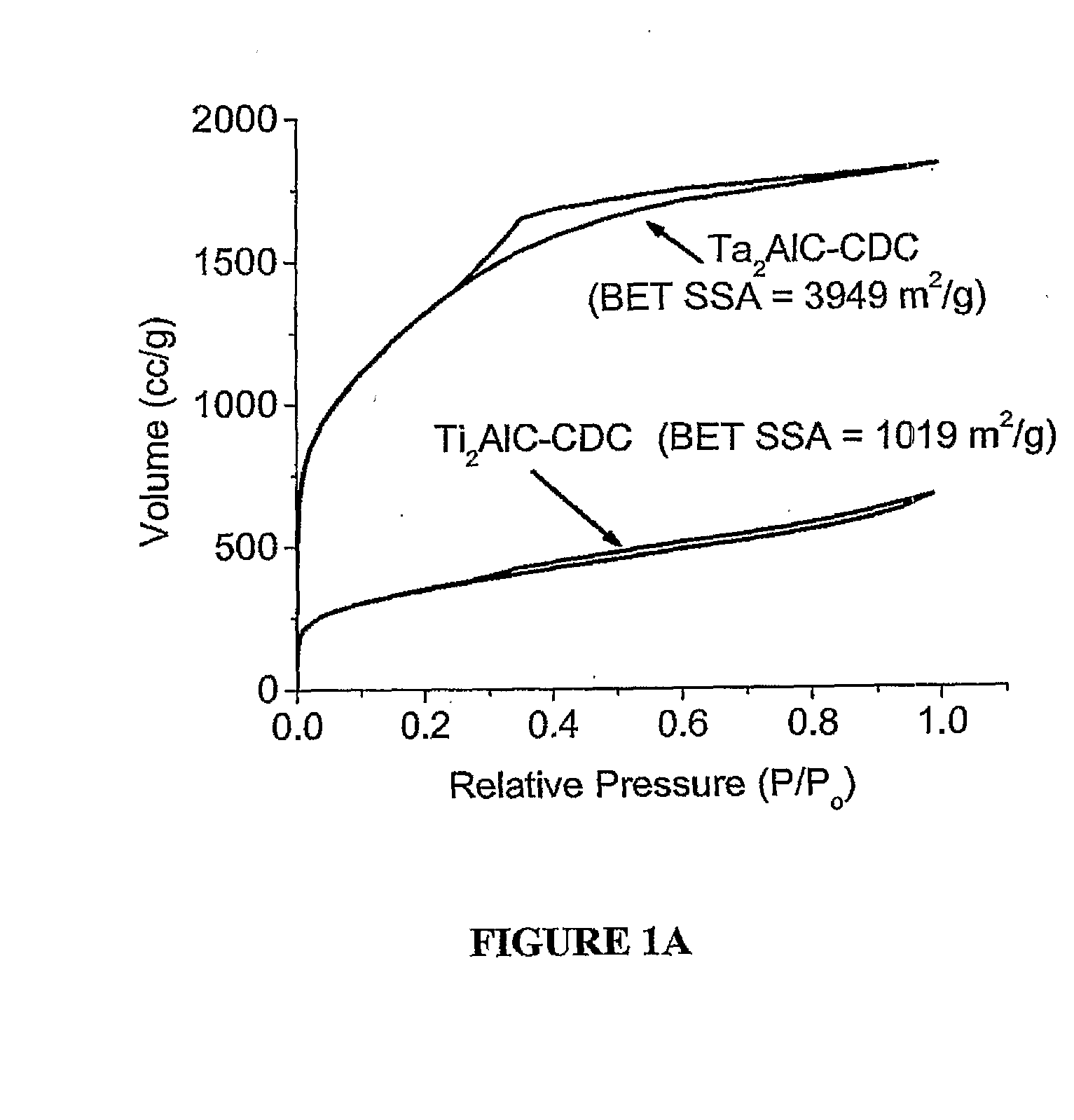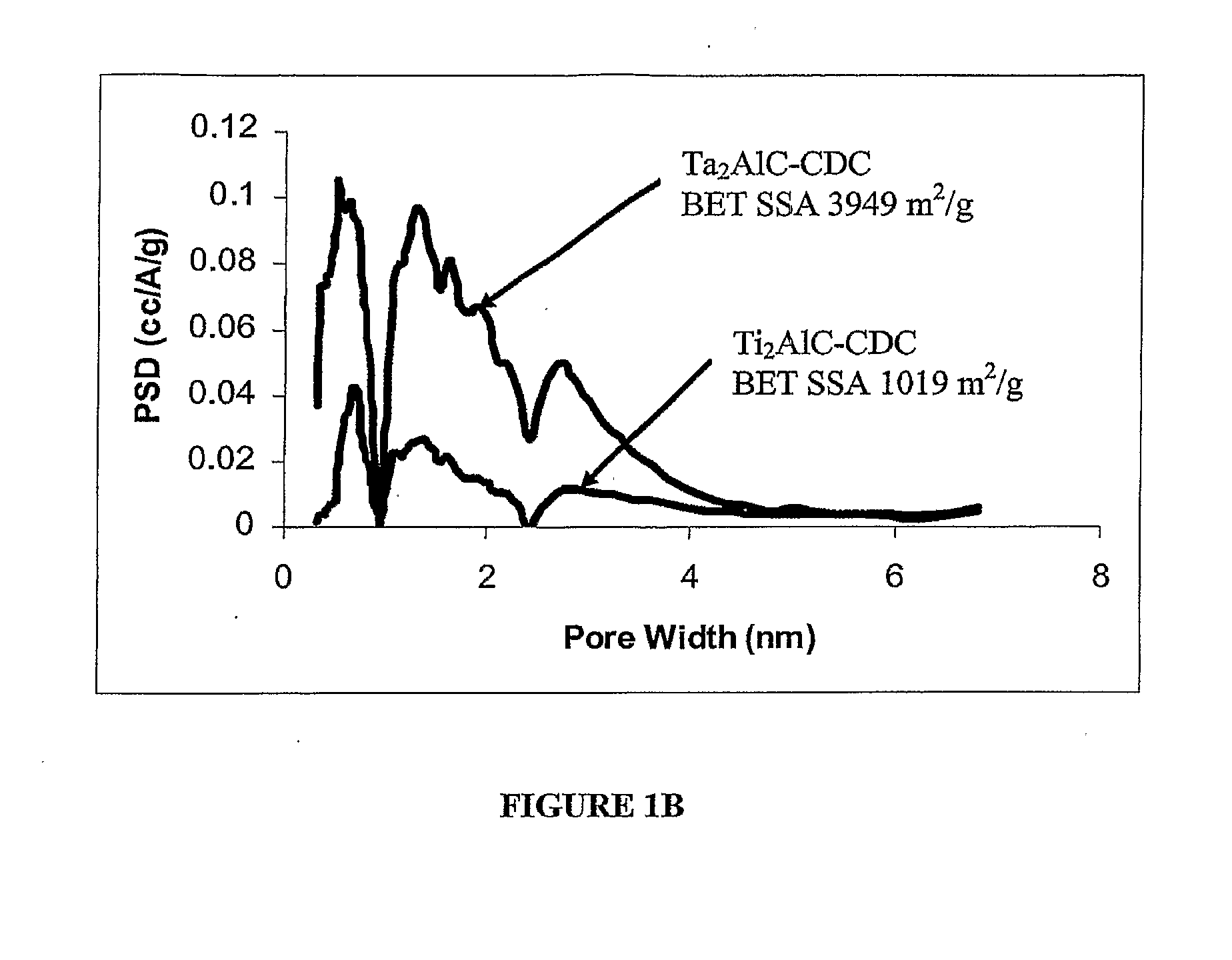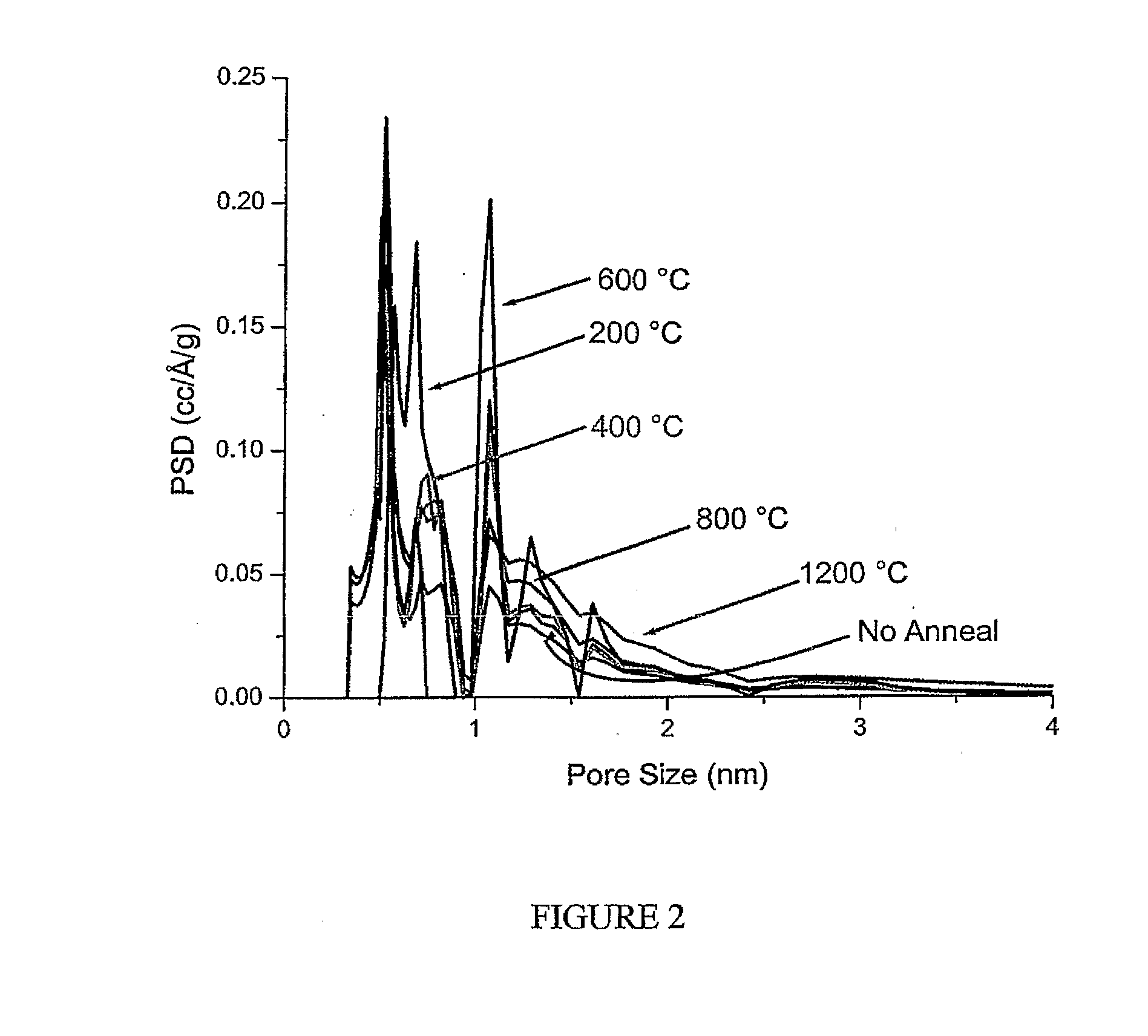Process for producing nanoporous carbide derived carbon with large specific surface area
a nanoporous carbide and carbon technology, applied in the field of porous materials, can solve the problem of little control over porosity and achieve the effect of high specific surface area (ssa)
- Summary
- Abstract
- Description
- Claims
- Application Information
AI Technical Summary
Benefits of technology
Problems solved by technology
Method used
Image
Examples
example 1
[0052]For the synthesis of porous carbons, selected metal carbide powder was placed onto a quartz sample holder and loaded into the hot zone of a horizontal quartz tube furnace. The quartz tube inner diameter dimension was 25 mm. The tube was Ar purged for 30 minutes at approximately 60 sccm before heating at a rate of approximately 30° C. / minute up to the desired temperature. Once the desired temperature was reached and stabilized, the Ar flow was stopped and a 3-hour chlorination began with Cl2 flowing at a rate of 20 sccm. The general reaction involved in synthesis of carbon from ternary metal carbides can be written as:
M1a,M2bCb(s)+(c1+c2 / 2)C12(g)→aM1C1c1(g)+bM1C1c2(g)+bC(s),
where M1 and M2 represent carbide-forming metals. Evolved metal chlorides were trapped in a water-cooled condenser at the outlet of the heating zone. After the completion of the chlorination process, the samples were cooled down under a flow of Ar to remove residual metal chlorides from the pores, and remove...
example 2
[0055]Porous carbon was synthesized from Ti3SiC2 (average particle size=10 micron; commercially available from 30NE2, Inc., Voorhees, N.J., www.3one2.com, using the experimental setup and technique described in Example 1. Porosity analysis of the produced porous was also identical to that set forth in Example 1. H2 annealing of porous carbon was performed using the same horizontal tube furnace setup. The flow rate of H2 of approximately 20 sccm and annealing time of 5 hours was chosen for all experiments. The furnace tube was purged with Ar for 30 minutes at ˜60 sccm prior to heating. Sample cooling was also done under Ar flow (20 sccm).
[0056]FIG. 2 and Table 1 (below) show the calculated pore-size distribution, BET SSA and pore volume for samples H2 annealed in the 400-1200° C. temperature range. Hydrogen annealed samples showed significant increase in BET SSA. This increase in SSA at low temperature H2 annealing is believed to be due to delicate carbon etching (from the formation ...
example 3
[0058]For the synthesis of porous carbons, 2 grams of titanium carbide powder were placed onto a quartz sample holder and loaded into the hot zone of a horizontal quartz tube furnace. The quartz tube inner diameter was 25 mm. The tube was Ar purged for 30 minutes at ˜60 sccm before heating at a rate of ˜30° C. / min up to the desired temperature (either 600 or 800° C. in these experiments).
[0059]The tube furnace's exhaust was connected to either a single bubbler filled with sulfuric acid or, optionally, to a series of two bubblers—first to a bubbler filled with sulfuric acid and then to a second bubbler filled with a solution of KOH; NaOH solution or some other solution that traps chlorine could be used in place of the KOH solution. The use of the bubbler(s) minimized the back-flow of the air and, in the case of the two-bubbler system, minimized the amount of unreacted chlorine to go to the exhaust system.
[0060]Once the desired temperature was reached and stabilized, the Ar flow was s...
PUM
| Property | Measurement | Unit |
|---|---|---|
| Temperature | aaaaa | aaaaa |
| Specific volume | aaaaa | aaaaa |
| Specific volume | aaaaa | aaaaa |
Abstract
Description
Claims
Application Information
 Login to View More
Login to View More - R&D
- Intellectual Property
- Life Sciences
- Materials
- Tech Scout
- Unparalleled Data Quality
- Higher Quality Content
- 60% Fewer Hallucinations
Browse by: Latest US Patents, China's latest patents, Technical Efficacy Thesaurus, Application Domain, Technology Topic, Popular Technical Reports.
© 2025 PatSnap. All rights reserved.Legal|Privacy policy|Modern Slavery Act Transparency Statement|Sitemap|About US| Contact US: help@patsnap.com



